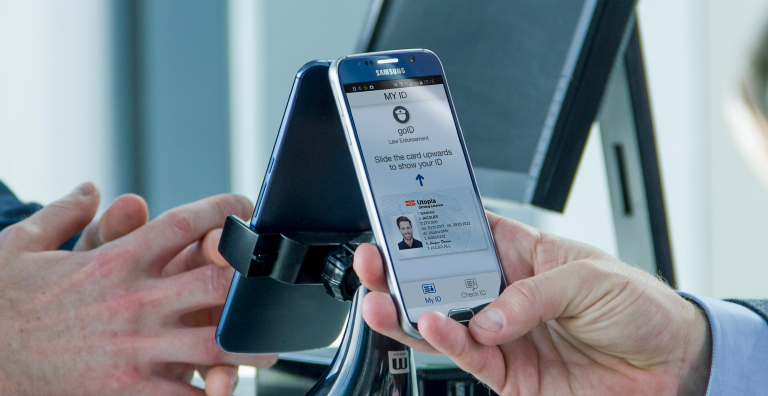How Mobile ID Facilitates e-Government
The path to implementation of mobile ID has perhaps been longer than the market expected with legislation particularly slow to respond to the pace of technology. There have been many pilots around the world, mainly for mobile driver licenses, but generally these projects haven’t progressed into full blown implementations. However, that is changing with the pioneering mobile National ID project in Argentina, which has issued more than 300,000 mobile identities to its citizens. This could be the start of an explosion of new mobile ID projects, but why is mobile ID important? And specifically, why is it important in enabling the next generation of e-Government?
Citizens Are Ready
By 2025 it is estimated that 70% of the global population will own a smartphone. That’s 5.8 billion individual users. For the vast majority of those users the primary purpose of their phone is not to make calls: it’s to be connected. Connected via the internet to friends, family, information, services, entertainment, retail outlets…the list is endless. So why not the government? Each citizen has to interact with their government to some degree. It makes sense that they would want to do this quickly and efficiently through their smartphone, in the same way that they do now with all the commercial entities they engage. Provided that the experience is secure, private and easy to use, users are ready for mobile ID.
The Challenge for Governments
So, it’s easy to see why mobile ID for eGovernment makes sense from a citizen’s point of view, but what about the Government itself? Authorities are under pressure to protect citizens from online fraud, protect minors online, communicate better with the population, be more transparent in dealing with citizens, all while driving economic growth and reducing costs. Most have recognized that the key to achieving these goals is digitization of their societies and modernization of public services. In some cases, this journey began many years ago with the introduction of e-ID programs where access was enabled with smart cards or tokens. However, public adoption of these programs were generally low, even in the most heralded of projects, as the citizen had to physically make efforts to obtain the card or token. This was compounded by the high cost of reader infrastructures and the inconvenience of having to have a physical credential to initiate a transaction.
Mobile ID Meeting the Challenge
The emergence of mobile ID has delivered a solution to many of the problems faced by governments in the digitization of their state and creating a secure trusted infrastructure.
Mobile ID can simplify the acquisition of the trusted identity credential. New remote onboarding technologies, provided they are anchored by robustly enrolled existing identity credentials, can deliver secure mobile identities to citizens without them needing to leave their homes. Modern delivery and encryption techniques protect this process to a level equivalent to the issuance of a physical credential.
With the mobile ID secured in a mobile device, there are multiple ways in which it can be shared. It can be called directly by other applications, it can be shared on the internet via Wi-Fi or the mobile network, presented using NFC by touch or close proximity, or even delivered over distances up to 30m by BLE. This is not only convenient, it also opens up the reader or verification infrastructure, as many of these technologies are already accepted by existing readers or readers can be easily enabled by the download of a verification application. The verification application can be conveniently delivered over the air like the mobile ID which means that the infrastructure can be developed cheaply and efficiently, often using existing devices.
With robust security mechanisms in place, possibly supported by biometric authentication, a mobile ID can help to solve the problem of age verification both for online and in-person applications. Similarly, the presence of such a mobile identity credential could add additional access security to government websites and services. This could remove the need for passwords, which are easily compromised, or be introduced as an additional factor to authenticate users. Ultimately the use of a mobile ID in this manner could be rolled out to the commercial sector, giving “government level” security to websites where financial transactions take place.
Finally, by having a mobile identity in the hands of each citizen, government could improve communication by enabling notifications in the form of push messages informing citizens of relevant changes to legislation, upcoming deadlines such as tax payments or even emergency notifications.
A Big Step Towards e-Government
We can see that the implementation of a mobile identity for citizens, if securely enrolled and provisioned, could make a large impact on the successful achievement of the e-Government and modernization goals of many governments. Not only does it provide a pathway for better engagement with their citizens, but it also gives a longer-term opportunity to create a secure identity infrastructure which encompasses many aspects of commerce. Meanwhile the citizens also benefit from an easy way of getting their mobile ID, the convenience of having their access to government and services on their mobile phone, and peace of mind that their security is protected online. Mobile IDs offer an attractive proposition to governments wanting to accelerate their e-Government plans by providing convenient and secure access to services.
If you want to learn more about mobile identity, read our executive brief: The Future is Now: How Governments are Using Mobile for a More Secure Citizenry.
